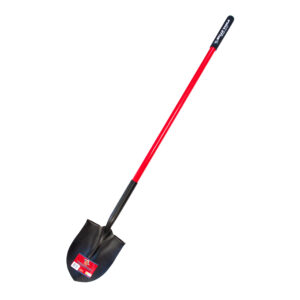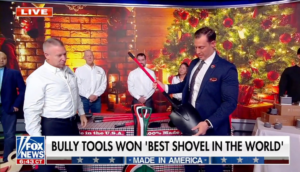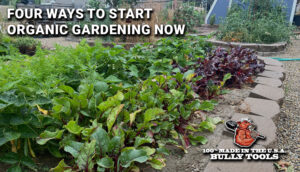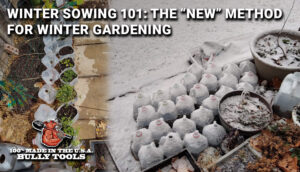10 Common Lawn and Landscaping Mistakes and How to Avoid Them

The appearance of your property should bring you joy. They say there’s nothing like home, but really, after almost a year spent shut inside, now is the best time to accomplish your lawn and landscaping goals. While in the process of sprucing up or making over your backyard space, do your best to avoid these common lawn and landscaping mistakes. Thankfully, humans have been working the land for centuries, so there are plenty of solutions and ways to avoid making these common mistakes.
1. PLANTING IN AN AREA WITH IMPROPER SUN EXPOSURE
The survival of any plant is largely influenced by the amount of sun it gets. When choosing a spot on your property to grow, it’s essential that you find an area that receives the right amount of sunlight. You can properly tend for your plant all you’d like, but if you plant a flower that needs eight hours of sun in a spot that doesn’t receive more than four, your plant has no chance of growing well.

HOW TO AVOID
You’re probably used to seeing labeling like full sun, full sun to partial sun, full sun to partial shade, and full shade on the tags that accompany seed bags and plant starters. Plants classified as full sun need six to eight hours of direct sunlight on most days to thrive properly. Full sun plants are the most heat tolerant of these four types and will keep their beauty and color all spring and summer long.
While the terms are not interchangeable, partial shade and partial sun plants both require three to six hours of sunlight during the day. These kinds of plants do best either in places that receive filtered light during the day or direct sun during the cooler hours of the day (early in the morning). An important difference between part shade and part sun plants is that part shade plants, unlike the latter, need the required amount of sunlight during the day but require shade during the sun’s strongest hours (the afternoon). Partial sun plants are more resilient, however, and can survive even if they receive more than 6 hours of light.
Plants classified as full shade can grow well in areas that receive less than three hours of direct sunlight per day and filtered sun throughout the rest of the day. Full shade plants can die if they receive too much sunlight, so make sure to plant them at the base of trees, under evergreen, or on a shady side of your house.
2. CUTTING YOUR GRASS TOO SHORT
The height of your grass is – as are all decisions made at your home – up to you, but lawn care professionals say that the ideal length of grass is 3 to 3 ½ inches high. However, the most common mowing mistake is cutting at lengths shorter than this. You should also avoid mowing too often, as shorter grass is prone to drying out and dying.
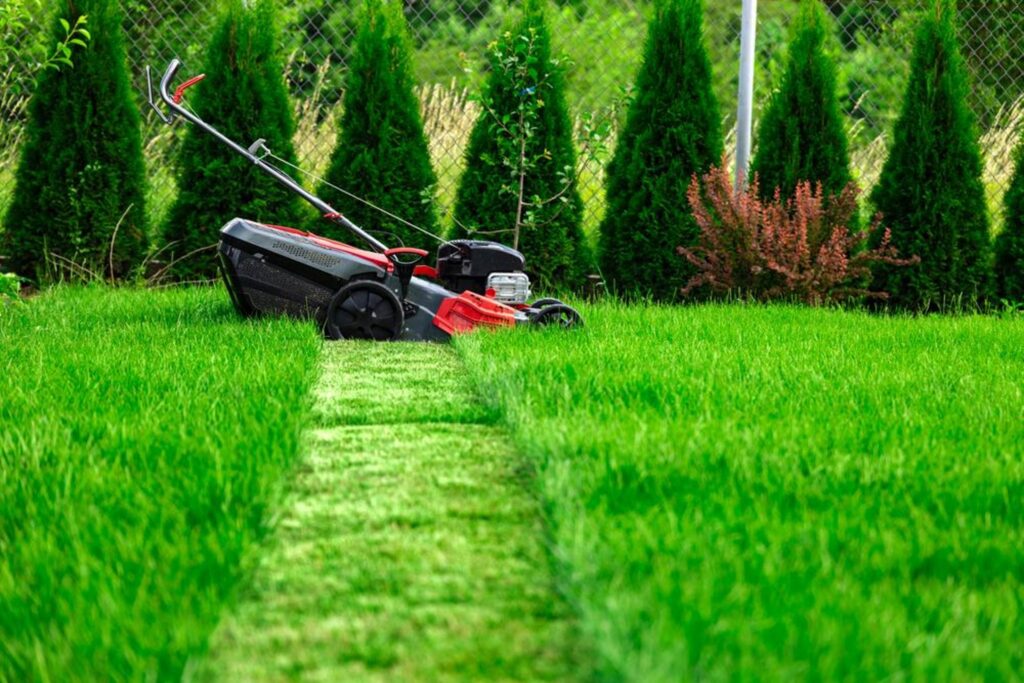
HOW TO AVOID
To prevent this, cut your grass about once every week or when it’s noticeably overgrown. In that time, your grass should grow about an inch, and you should cut your grass about one-third of its length during any mowing.
If you notice brown, dying patches of grass or you knowingly cut too close to the grass spades’ growing points, your grass will be slow to grow back. It can regenerate faster with the help of fertilizer, or you can start fresh by cultivating the area and adding new grass seed.
3. NEGLECTING YOUR CURB APPEAL
Summer is a busy time for all of us: you have to cart your kids to activities, plan vacations (finally), and find time to relax in between shifts at work. Saying this, why not come home to a beautifully landscaped front yard? It is certainly proven that the appearance of your home impacts your mood, so make yourself smile every time you pull into your driveway by amping up your curb appeal.

HOW TO AVOID
There is no right or wrong way to decorate the outside of your home, but you don’t have to completely remodel your space to love it. Some small changes that you can make right away include regularly cutting your grass, edging around the outside of your lawn or planting beds, and adding mulch. You can also decorate based on the season. Aside from any animate or inanimate holiday decorations you put up, you can also add seasonal touches like a birdbath or wheelbarrow planter in the summer or cornstalks and pumpkins in the fall to give your home a natural fall look. The impact that outdoor seating can make on your entryway shouldn’t be understated either. Having an outdoor spot where you can unwind is a peaceful way to spend any day, and you can make that space your own by adding chairs, end tables, and decorations that make you happy.
As far as plants, try using a mix of real and fake. Although we love digging in the dirt, artificial flora is a less expensive and maintenance-free option if you want the look of live plants without the weeding, watering, and time spent waiting for them to bloom. No one would ever know if you were to mix real and fake flowers – from a distance they look the same! – but this way, you get the sweat equity of caring for your live plants without working yourself too hard if you don’t want to.
Most importantly, decorate in whatever way makes you happy to come home! It’s your space so make it unique and personal.
4. NOT THINKING A PROJECT ALL THE WAY THROUGH
We’ve all been there – halfway through a grand remodel or home project when we realize that there’s an issue. There’s no doubt that you should leave room for any unavoidable obstacles or complications that may pop up during a building process or renovation, but make sure to always plan out a project from start to finish before you begin.
HOW TO AVOID
It’s important to have a thorough understanding of the project you plan to take on. Take note of all the materials and supplies that will you need and plan to rent or borrow tools if you don’t already have them. Having a plan also keeps you from blowing your budget. It’s easy to get lost in spending when you’re creating the back deck of your dreams or shopping for plants, so seriously think through your plans before you shop.
5. FAILING TO BE ECO-FRIENDLY
It’s 2021, so by now, there’s no reason to be unkind to the environment. Unfortunately, no one individual can change the uncertain circumstances our planet is enduring right now, but each of us can try our hardest to be as eco-friendly as possible. Choosing to make environmentally conscious purchases and developing habits that lower your personal carbon footprint both benefit the Earth, but these changes also can save you money in the long run and give you the peace of mind that you’re effecting change.
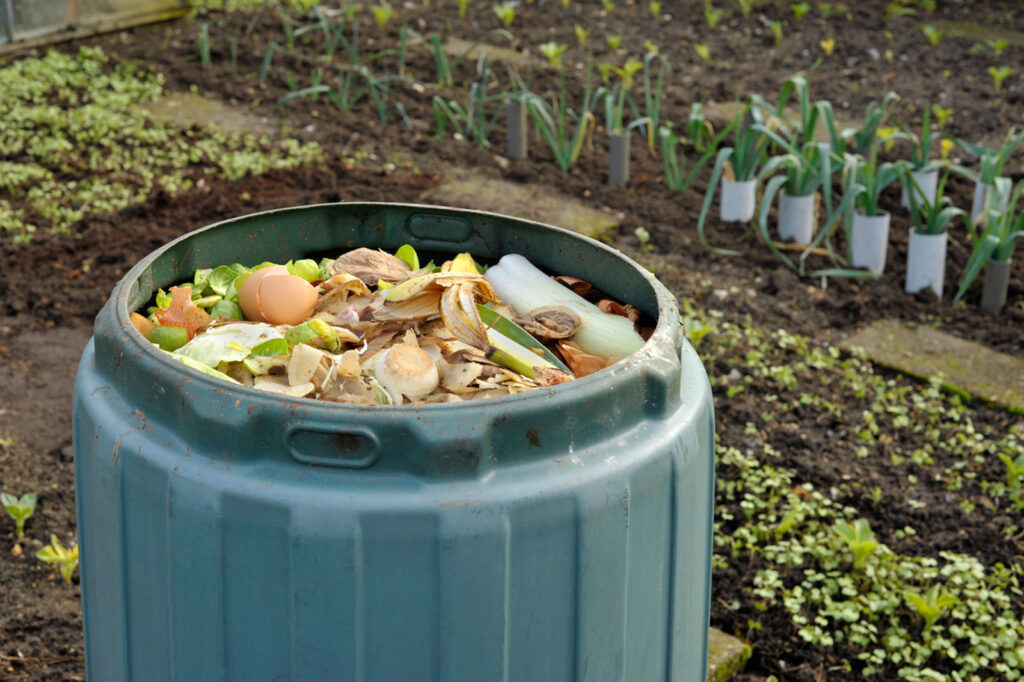
HOW TO AVOID
It’s alright to start small – any start is a start – but here’s a list of some ways to make your lawn, garden, and lifestyle a little greener.
- FORGET THE GAS AND OIL – An easy way to become more environmentally friendly is by using hand tools. When gas and oil are burned inside a tractor or rototiller, harmful toxins are released into the atmosphere. An overabundance of these fossil fuels already exists and has caused the planet’s temperature to rise. Instead, opt for hand tools that utilize your own manpower rather than gas and oil.
- PLANT TREES – Trees are cut down every day for lumber, clearing land, and creating consumer products (guilty!). The problem is – for the countless trees that are cut down, not enough trees are planted to replace them. Trees provide oxygen for us to breathe, improve air quality, act as a habitat for many wildlife, and help to deter stormwater runoff that could lead to erosion and pollution. Plus, planting trees in your backyard is a great way to create polite privacy between your home and your neighbors’.
- TRY OUT RESOURCE-CONSERVING PRACTICES – Sadly, the old “reduce, reuse, recycle” chestnut falls short of conveying the complexities of our current climate situation, but it’s never been more important to be mindful of how much water you use, how much waste you produce, and how we can make our everyday tasks eco-friendly.
- Collect water in rain barrels and use it to water your garden, grass, plants, etc.
- Throw your food leftovers, lawn trimmings, and dead leaves into a compost bin and use the compost as fertilizer
- Reuse containers, jars, and crates that you plan to throw away as planters or for garden storage
- USE ORGANIC FERTILIZERS OVER SYNTHETIC – You can grow a healthy, vibrant garden this year without the use of costly additives and fertilizers by adding compost to your plant life. Compost is organic material commonly found in everyday waste like food scraps and lawn trimmings that if composted and placed around a plant properly, encourages the growth of beneficial bacteria and fungi and enriches soil which will aid in your plants’ growth.
- PLANT PERENNIALS AND LOW MAINTENANCE PLANTS – Low-maintenance plants, as their name would suggest, require less fuss, water, and attention than other plants. Once planted, perennial plants last on average two additional seasons (sometimes more!). This means that even though they may seem dead in the winter, perennials come back every year as opposed to annual plants that will only survive one spring/summer. By opting for these types of plants, you won’t have to waste money or resources on buying and growing new plants.
6. USING THE WRONG TOOLS
It’s easy for a home improvement beginner to get confused by the many – and we mean many – different types of tools on the market today. It’s also easy to confuse the names of tools since many have different variations or are commonly referred to as other names. A good example is the difference between a shovel and a spade. These tools, while similar in appearance, were designed to complete two very different tasks, and you will find that you won’t get very far removing the top layer of sod from your lawn if you end up digging too deep into the ground using a shovel.
HOW TO AVOID
If you’re unsure of a tool’s purpose, it’s not a bad idea to research it. And if you don’t know what tool is right for the job, research that too! There are thousands of online and print resources that can help you find a tool to help with the task you want to accomplish. Also, don’t be afraid to ask a landscaping professional, garden expert, or employee at your local hardware store. They may even have alternative or specialty tools that they have tried and recommend.
7. OVERWATERING YOUR PLANTS
While watering isn’t the most complicated task that comes with gardening, it is one of the most important. No matter where or what you grow, you will need to supply your plants with an adequate amount of water throughout their lifespan for them to grow beautifully, bear edibles or flowers, and last the summer. Overwatering can cause disease or your plants’ growth to become stunted. Instead, water less frequently but when you water, water deeply and in a more calculated way.
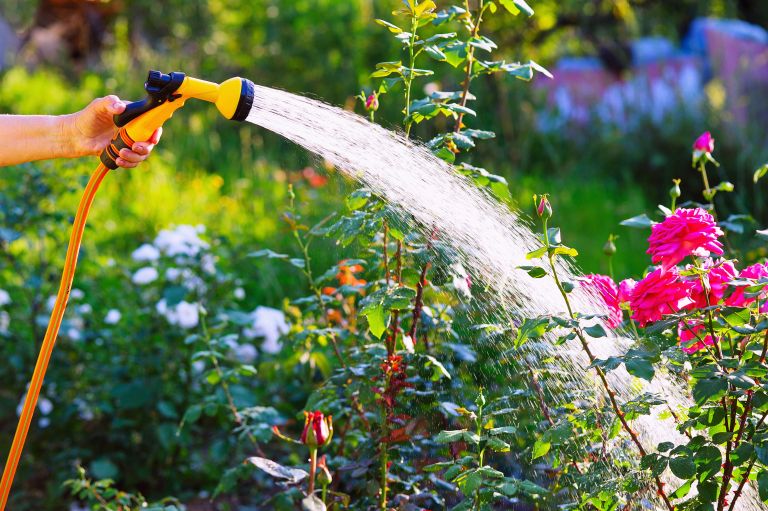
HOW TO AVOID
To water your plants thoroughly, moisten the base of your plant including the entire root zone. If you’re watering a flower or vegetable bed, be sure to get in between the plants with gentle pressure as to not disrupt or damage the growth. You can check the moisture of your plants with a soil moisture gauge. This tool is inexpensive and perfect for houseplants and indoor/outdoor potted plants as well as your beds outside. It reaches inches into soil and identifies when your plant needs to be watered so that you can prevent overwatering and underwatering. It’s best to water your plants early in the morning or late in the evening whenever the temperature is noticeably its coolest. By watering early in the morning or during sunset, there is less chance of that water evaporating over the next few hours, as it would do if you watered in the middle of the day.
And, don’t forget about your trees, bushes, and shrubs either! If you live in an area that does receive an adequate amount of rain and you have mature trees and shrubs, check their health occasionally. If you notice anything off about their appearance or dead, brown spots, give the area a thorough watering with 1″ to 1 1/2″ of water, in increments, one to two times a week until you notice a visual difference. If you recently planted grass, a tree, or a set of shrubs, make sure to water often according to the planting instructions. Newly planted flora need more moisture and attention than established, mature plants do.
8. PURCHASING PLANTS THAT WON’T THRIVE IN YOUR CLIMATE
Have you planted non-regional plants that did not end up growing well? A leading reason for that is because not all plants are suitable for all soil conditions. Understanding what can and cannot properly survive in your backyard is the best way to ensure that your plants will grow successfully.
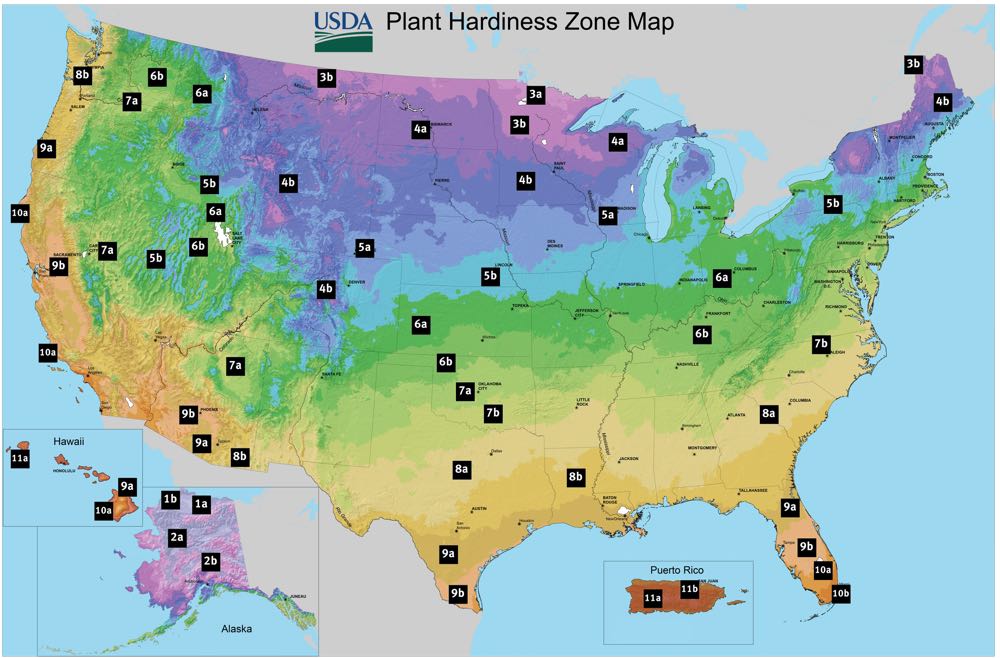
HOW TO AVOID
Every city in the United States endures different weather patterns, temperatures, and environments, and thankfully, scientists and horticulturists have found ways to classify plants based on their ability to tolerate these different climates. The three most popular classification systems are USDA hardiness zones, AHS heat zones, and Sunset climate zones.
- NEW ENGLAND, MID-ATLANTIC, MIDWEST, AND SOUTH – If you live in a state that has cold, harsh winters, you can rely on the USDA Hardiness zone map and AHS heat zones to help you find plants that will survive in your region for years to come. Plants become dormant in the winter – they lose their color, dry up, and get covered in snow – but that doesn’t necessarily mean that they won’t come back in the spring. A plant’s hardiness indicates how well it can survive cold temperatures. Websites like gardenia.net can help you find your home’s specific hardiness zone based on the zip code you live in. The lower the hardiness zone number, the more likely it is that your region receives frost in the winter.
- WESTERN – If you live in the Western portion of the United States, you can rely on Sunset climate zones to accurately predict when your growing season will be, the average high and low temperatures of your region, and the influence of wind and air pressure that might affect your plants’ growth. Sunset climate zones are very well-researched and take many important factors into account, especially given the West’s plethora of hills, valleys, mountains, coasts, and range of temperatures. Sunset Magazine, a lifestyle magazine that focuses on the Western United States (and the creator of this system), provides an updated, in-depth guide to finding and understanding which of the 24 Sunset climate zones you live in.
9. NOT AMENDING YOUR SOIL
Another possible cause for poor plant growth is improper soil pH. Knowing your home’s soil type and what to add to it to accommodate the conditions needed for your plants is essential. Some fruits and vegetables require specific acidity (or lack of) to properly grow. So it’s important to know your soil’s pH level as well as the pH level most suitable for those plants.

HOW TO AVOID
Alkalinity or soil acidity is measured on a scale from 0 to 14. Lower pH values indicate higher levels of acidity, while numbers closer to 14 indicate alkalinity. Your soil’s pH level has a direct correlation to the abundance of nutrients available in the soil, and if a plant you have purchased requires a different pH level, you can amend your soil to be more accomodating.
To determine your soil’s pH, purchase an at-home soil test or send out a sample for testing. A soil test will provide you with all the right measurements of garden lime or other products needed to adjust it. If your soil needs to be more acidic, add powdered sulfur to lower its alkalinity. If your soil is too acidic, it is suggested to add granulated limestone. The adjustment process takes time – it can take up to a year to see the best results – but you will see a serious improvement during the next year’s harvest.
The accuracy of at-home test kits varies by brand, but the American Society for Horticultural Science tested five commercially available colorimetric soil test kits and found that La Motte Soil Test Kit and Rapitest lead the pack. They were determined to be, respectfully, 94% and 92% accurate when compared with a standard laboratory analysis of that same sample. But if you want guaranteed accuracy, you can send your soil sample to a local or regional lab. Many colleges and universities offer this service, or you can research a garden/agricultural center that accepts soil samples.
10. PLANTING IN POTS THAT ARE TOO BIG OR TOO SMALL
Potted plants and container gardens allow you to bring nature inside or to an area where plants don’t naturally grow, but to ensure that a plant grows to its fullest potential, you must make sure to upgrade its pot when the plant itself gets too big. The size of a plant’s pot affects the amount of air and water it takes in, the abundance of nutrients available, and how much room the roots have to expand.
Small potted plants have less soil in them, meaning that there are fewer nutrients for the plant to live off of, and less soil suggests that the plant may dry out too quickly as well. Small pots also restrict the plant’s roots which can stunt and/or slow the growth of the plant. Growing in pots that are too large bring their own different, but equally troublesome set of problems. A large pot with a small or young plant would require a lot of soil which can 1. absorb too much water and 2. be slow to drain, both of which could cause root rot or disease.

HOW TO AVOID
You can avoid any sort of container-related growing issue by being vigilant of your plant. If you notice roots growing out of drainage holes, that your plant is drying out faster than you can properly water it, or if the plant has not grown any larger over an extended period of time, transplant it to a bigger pot with more soil. With more space, a once-crowded plant can grow noticeably in very little time.
We are all guilty of making at least a few of these mistakes, but the good thing about making them is that they’ll probably never happen again – to you at least. But, what’s never a mistake is choosing 100% Made in the USA Bully Tools for all of your lawn and landscaping tool needs. We make commercial-grade, consumer-priced products that can help you conquer every task on your summer, lawn, and landscaping to-do lists.





